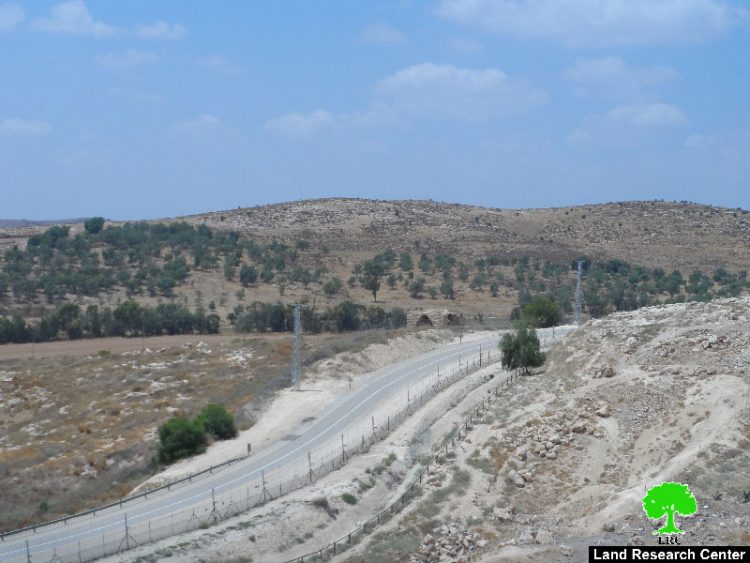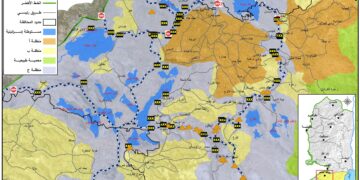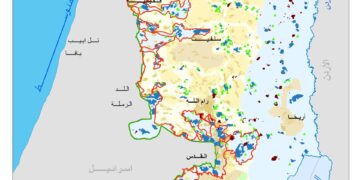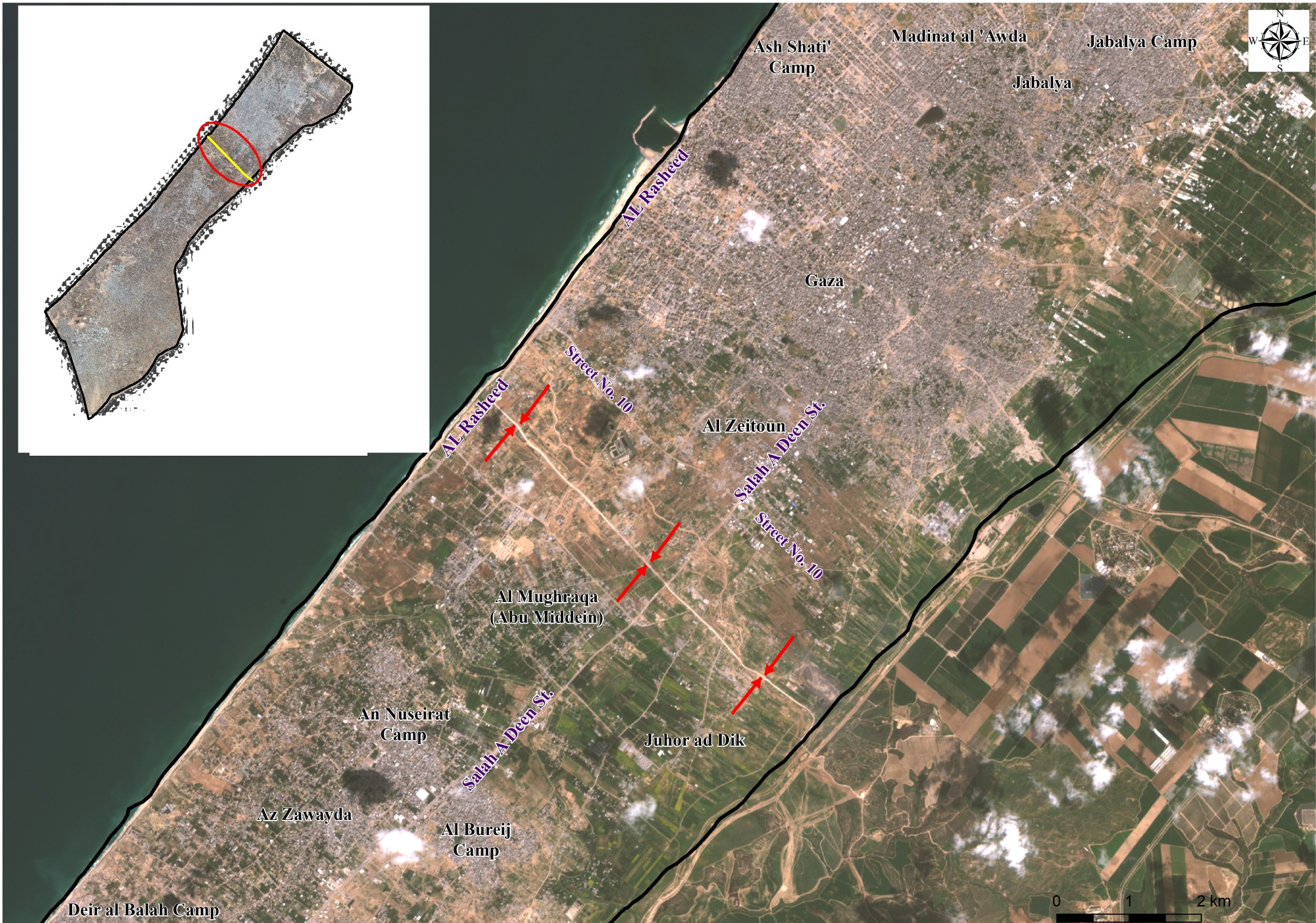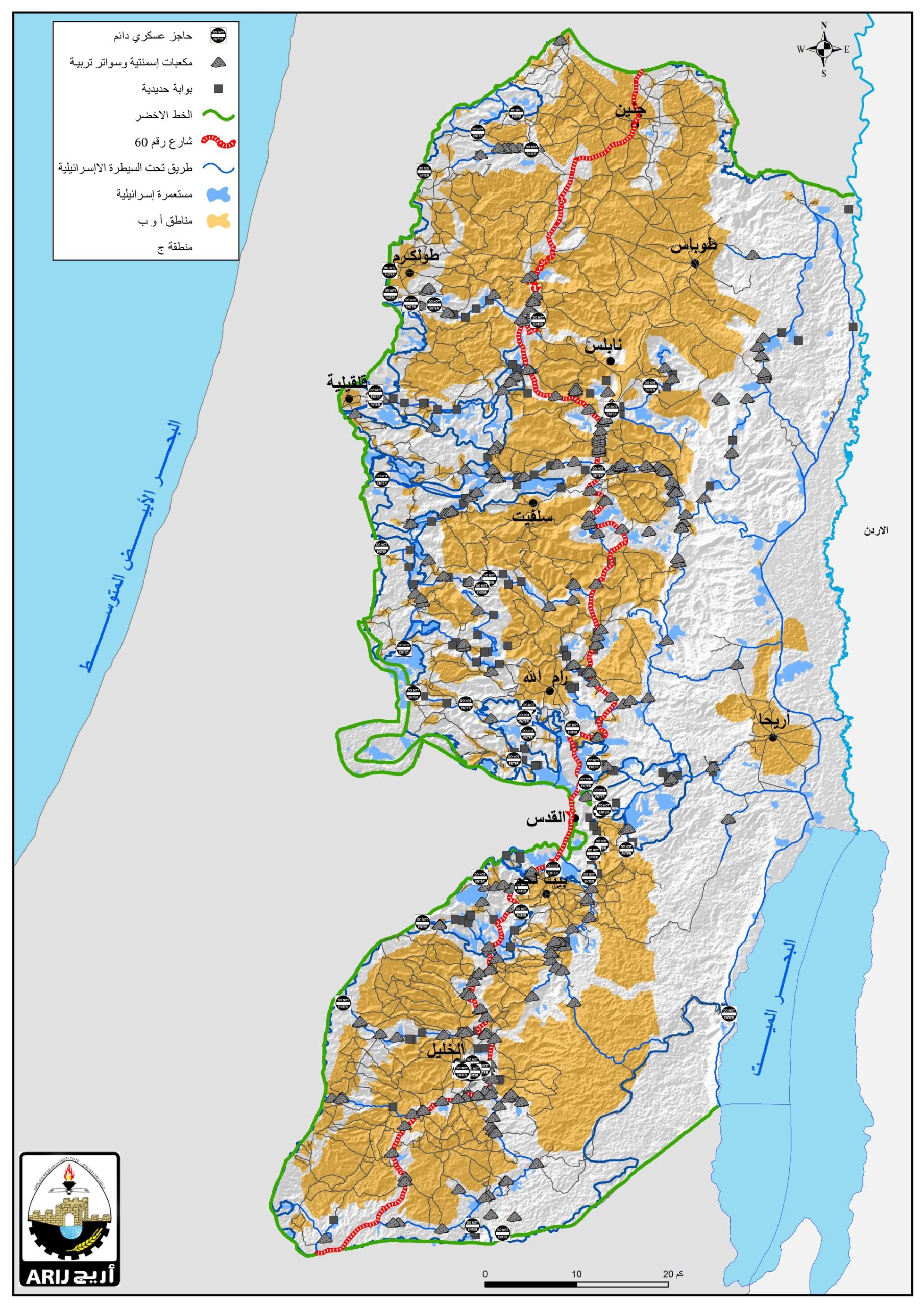Israeli Occupation Forces on June 26, 2016 replaced the apartheid fence set up alongside the borders of 1948, south Hebron with cement blocks.
It should be marked that the machineries of the occupation started digging works between the area called "Security road" and the apartheid fence. Also, the area was leveled and cement was laid down in preparation to set up the readymade cement blocks.
It is reported that this step was carried out six months after the decision of War Minister, Moshe Yalon, who called to fortify the wall south Hebron on the claims of "Security Needs". Another claim was to stop attackers from entering Israel to carry out stabbing attacks and to also separate Hebron from Kiryat Gat and Leikhesh areas.
The changes on the wall occurred in the segments founded on lands from the villages of Al-Burj and Al-Ramadin, south Hebron. Machineries embarked on works in the area known as " Al-Sabata", south Al-Burj village. It was noticed from the construction method that the wall was set up to head to the west towards Al-Ramadin village.



Photos 1-3: construction works on the new wall
The existing apartheid fence was set up on the western lands of Al-Burj village between 2006-2007. Vast area of agricultural lands and a water resource called " Al-Bayarah spring" were taken over as a result. Not only, the fence also devoured the premises of a school established in late forties.
Photo 4: the school of Al-Burj village
It should be marked that the "apartheid wall" founded on the lands of western Hebron governorate is an electric fence set up at different heights.
The fence isolated around 14,308 agricultural dunums and banned owners access to their properties but through special permits, which cannot be obtained but after complicated procedures. The following tables shows information about the isolated lands in different Hebron villages:
|
Village |
Area\dunum |
|
Al-Burj |
549.4 |
|
Surif |
2,617.1 |
|
Nuba |
1,449.2 |
|
Beit Ula |
463.0 |
|
Idhna |
3,510.8 |
|
Al-Ramadin |
4,833.3 |
|
Al-Yasiriya |
360.5 |
|
Ad-Dhahiriya |
207.5 |
|
Sikih\Tuwwas |
39.7 |
|
Al-Majid |
107.7 |
|
Deir Al-Asal Al-Tihta |
63.6 |
|
Deir Al-Asal Al-Fauqa |
56.8 |
|
Beit Al-Rosh Al-Tihta |
49.4 |
|
Isolated area\dunum |
14,308 |
(source: geographical information system GIS – LRC)
The wall in legal context:
Construction works on the wall started in 2000 during the time of Israel Prime Minister Ehud Barrack. The Israeli government tried hard to prove the wall was legal through claiming it " preventive" and made for " security reasons". It should be marked that the wall extended from Salem village, south West Bank to its planned route.
The main reason behind establishing the wall was not to maintain Israel's security but to take as much land as possible over to be annexed for the favor of the colonization. This is considered a breach of International Laws and the following articles of Geneva Fourth Convention of 1949:
- Article 27 mentioned that protected person must be well treated, taking into account health conditions, age and gender.
- Article 33: mentioned the ban on collective punishment, pillage, reprisals from protected persons.
- Article 39: mentioned the provision of job opportunities for those who lost their means of sustenance due to war.
- Article 46: mentioned the halt on restrictive procedures on properties after end of attacks.
- Article 47: mentioned the ban on denying protected persons their rights after annexation of lands.
- Article 49: mentioned the partial or full evacuation of an occupied area if population safety is threatened.
- Article 52: mentioned the protection of workers and ban on procedures that cause unemployment.
- Article 53: mentioned the ban on destroying any property unless it is war necessity
Legal Consequences of the Construction of a Wall
in the Occupied Palestinian Territory
ADVISORY OPINION
The Court finds that the construction by Israel of a wall in the Occupied Palestinian
Territory and its associated régime are contrary to international law; it states
the legal consequences arising from that illegality
THE HAGUE, 9 July 2004. The International Court of Justice (ICJ), principal judicial organ of the United Nations, has today rendered its Advisory Opinion in the case concerning the Legal Consequences of the Construction of a Wall in the Occupied Palestinian Territory (request for advisory opinion).
In its Opinion, the Court finds unanimously that it has jurisdiction to give the advisory opinion requested by the United Nations General Assembly and decides by fourteen votes to one to comply with that request.
The Court responds to the question as follows:
- A. By fourteen votes to one,
The construction of the wall being built by Israel, the occupying Power, in the Occupied Palestinian Territory, including in and around East Jerusalem, and its associated régime, are contrary to international law;
- B. By fourteen votes to one,
Israel is under an obligation to terminate its breaches of international law; it is under an obligation to cease forthwith the works of construction of the wall being built in the Occupied Palestinian Territory, including in and around East Jerusalem, to dismantle forthwith the structure therein situated, and to repeal or render ineffective forthwith all legislative and regulatory acts relating thereto, in accordance with paragraph 151 of this Opinion”;
- C. By fourteen votes to one,
Israel is under an obligation to make reparation for all damage caused by the construction of the wall in the Occupied Palestinian Territory, including in and around East Jerusalem;
- D. By thirteen votes to two,
All States are under an obligation not to recognize the illegal situation resulting from the construction of the wall and not to render aid or assistance in maintaining the situation created by such construction; all States parties to the Fourth Geneva Convention relative to the Protection of Civilian Persons in Time of War of 12 August 1949 have in addition the obligation, while respecting the United Nations Charter and international law, to ensure compliance by Israel with international humanitarian law as embodied in that Convention;
- E. By fourteen votes to one,
The United Nations, and especially the General Assembly and the Security Council, should consider what further action is required to bring to an end the illegal situation resulting from the construction of the wall and the associated régime, taking due account of the present Advisory Opinion.”
Prepared by
The Land Research Center
LRC

